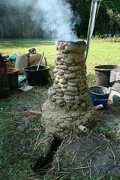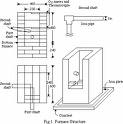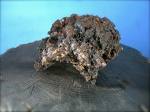
"The Katana Sword"
It's Not Just A Really Cool Blade... It's A Masterpiece.

The Katana Sword, or what is commonly known as the Samurai sword is quite impressive to say the least. They are in high demand all around the world and can be purchased as a single sword or in a Katana sword set.

My job as always is to give you a bit of knowledge and history about any of these subjects so that you can make educated decisions based on educated thoughts.
Sure, they are cool and all but to really love one of these swords is to first respect what goes into the making of one. Otherwise, they are just cool as we said and not as awesome as they could be with a bit of knowledge. So here, we go then.
"Production Of A Katana Sword"

First, though we call the Katana sword a Samurai sword, katana is a term in Japan that applies to any kind of single edged sword of any origin. It doesn’t apply to just a sword from Japan. It is defined by its distinctive appearance, curved, long single edge with a rounded or even square guard. So now, you know.
I’m going to rehash a little of what we went over on the Japanese steel page so that I don’t leave it out for those that clicked straight over to here, so bare with me.

Steel is iron that contains carbon. If you add more carbon into the equation then the steel will be a harder grade.
The trick is to keep the right amount of carbon under control. This is an art in and of itself. The steel that is used to forge a Katana sword is extremely pure steel, what is called tamahagane.
Tamahagane translated is “Jewel Steel” and is made from black sand. It requires 4-5 people to watch over that process of smelting tamahagane.
"The Tatara"

You will only find one style of smelter for this art left In Japan and it is called a tatara. (Smaller homemade remake on right) The tatara is a clay vessel about 4ft tall and 12ft long and 4 ft deep. Originally, the word meant just the foot bellows but later came to be known as the entire furnace. Eventually they just called the whole structure that housed the furnace a tatara.
After the tatara clay set, it was then fired until it was dry. It is only going to be used once because you have to break it to get to the good stuff.

After the furnace is at the right temperature, the satetsu is added, otherwise known as iron sand. Satetsu contains a lot less impurity. In particular, it contains very little Silicate. The structure of Satetsu is very solid and high in density. It is also called the White Cast Iron, as it appears to be white in color.
From just looking at it, most people think that it is silver. Over the next 3 days, they will layer this with more charcoal and black sand. When the process is done, they will have turned iron into steel and they will break the clay tatara and take the steel bloom known as a Kera.
 Once it is all said and done, the fire will have burnt off 10 tons of the satetsu and 12 tons of charcoal, leaving about 2.5 tons of the Kera for sword making but less than one ton of tamahagane can be produced from that. That is quite a process to end up with less than a ton to work with but obviously; it is well worth the effort.
Once it is all said and done, the fire will have burnt off 10 tons of the satetsu and 12 tons of charcoal, leaving about 2.5 tons of the Kera for sword making but less than one ton of tamahagane can be produced from that. That is quite a process to end up with less than a ton to work with but obviously; it is well worth the effort.
Sword smiths then break the Kera apart and separate the carbon steels. The lowest is called hocho-tetsu, which is used for the shingane. Shingane means core steel like in the matter of steel construction. When a steel blade is composed with several kinds of steels, the steel used at the core is core steel. If a blade has no steel that can be called as core, then of course it has no core steel. The word "Shingane" doesn't refer to the quality of the steel itself.
The higher carbon tamahagane is called nabe-gane, which will be forged into alternating layers to form kawagane or what is known as the skin steel. The metals are then folded and forge welded up to 16 times. Evening out the carbon content, and ridding it of excess impurities. It also gives it that Damascus steel look

Tamahagane is only produced three or four times a year by Nittoho and Hitachi Metals and is only sold to the masters when it is done. Therefore, if you want tamahagane, then you may need to make it yourself.
It can be done though so if you are that dedicated I’m sure that it is quite rewarding. So that is the extraordinary process of making the steel that goes into a katana sword over in Japan.
If you don’t have a higher respect for the sword after reading this then you can just call them really cool and awesome and get one for that reason too. Check out the Japanese stainless steel on the other page if you have time. Good luck with your purchase. I’m sure you are going to be happy.
Katana Sword To The Home Page
Japanese Knives
Japanese Steel